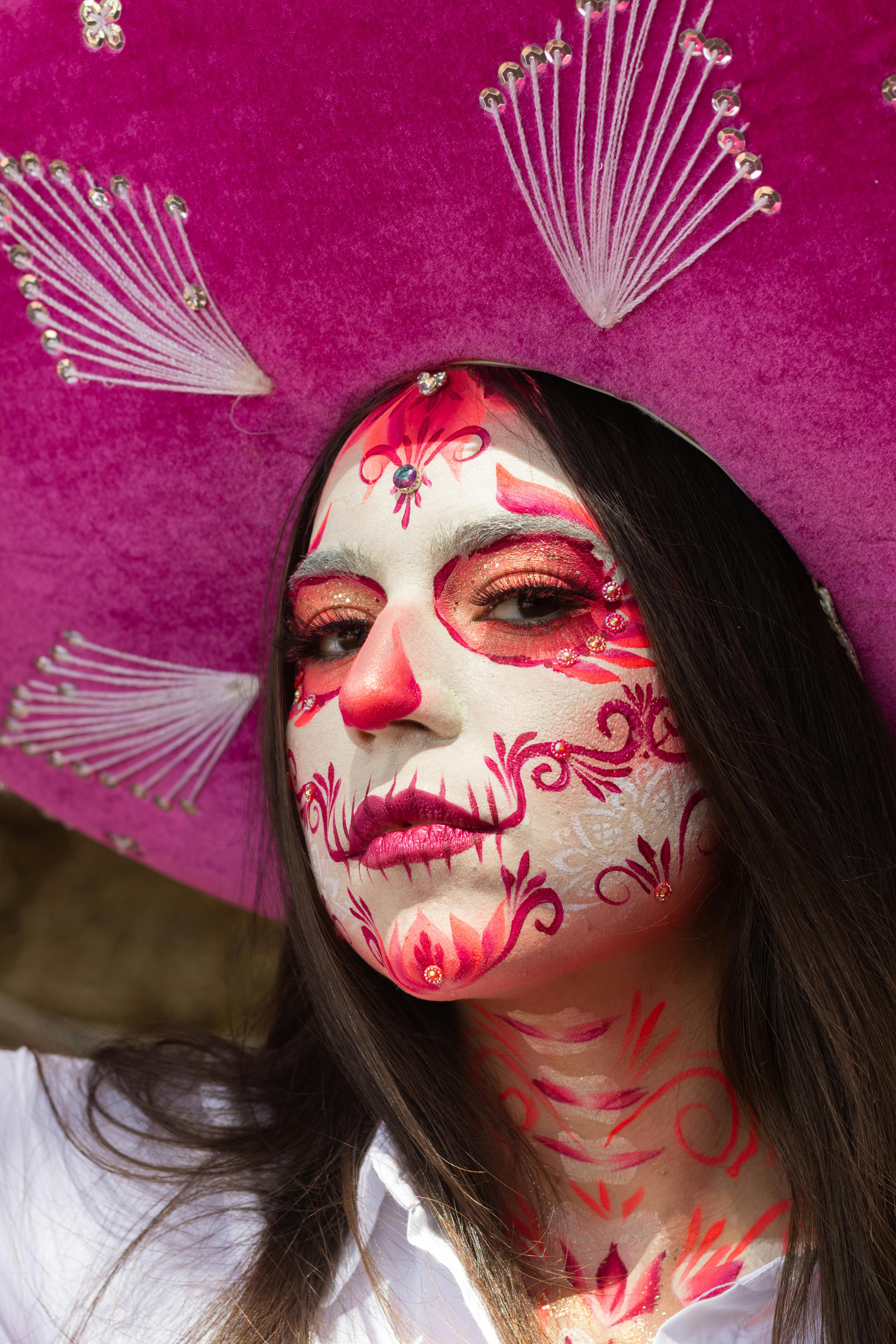In this article, we are excited to share with you the captivating world of Cowrie Shell Necklaces and Traditional Cuisine. At Upsera, we invite you to immerse yourself in the beauty and cultural significance of these exquisite pieces. With their timeless elegance, they are perfect for special occasions or as meaningful gifts. But that's not all - we'll also take you on a culinary journey, highlighting the mouthwatering delights of traditional cuisine. Prepare to be tantalized by the rich flavors and savory dishes that will transport you to far-off lands. Join us as we explore the harmonious blend of elegance and gastronomy in the fascinating realm of Cowrie Necklace and Traditional Cuisine.

Traditional Cuisine
History of traditional cuisine
Traditional cuisine has been an integral part of human civilization since ancient times. It is a reflection of a community's culture, geography, and historical background. The history of traditional cuisine can be traced back to the origins of human civilization when people began to explore different cooking methods and ingredients.
As early humans settled in different regions, they adapted their cuisine according to the available resources and environmental conditions. Over time, these culinary traditions became ingrained in the cultural fabric of societies, passing down from one generation to another.
Ingredients used in traditional cuisine
Traditional cuisine relies heavily on locally sourced ingredients, showcasing the unique flavors and aromas of a particular region. It celebrates the abundance of nature, incorporating a wide variety of fruits, vegetables, grains, herbs, and spices. The use of indigenous ingredients not only adds distinct flavors to the dishes but also reflects the agricultural practices and biodiversity of a region.
From exotic spices in Indian cuisine to staple grains like rice and wheat in Asian and European cuisines, traditional dishes are a harmonious blend of flavors, textures, and colors. The art of using the right ingredients in the right proportions is what sets traditional cuisine apart and keeps its legacy alive.
Popular traditional dishes
Traditional cuisine boasts a myriad of mouth-watering dishes that have stood the test of time. These dishes have become iconic representations of a culture and are cherished by people worldwide. From aromatic curries in India to hearty stews in Europe and flavorsome stir-fries in Asia, traditional dishes offer a glimpse into the rich cultural heritage of different regions.
Some popular examples of traditional dishes include:
-
Biryani: A fragrant rice dish adorned with aromatic spices, meat or vegetables, and saffron strands. Biryani is a beloved dish in South Asian cuisine, known for its rich flavors and elaborate preparation method.
-
Sushi: A Japanese delicacy that features vinegared rice, fresh seafood, and vegetables. Sushi showcases the precise art of balancing flavors and textures, and it has become immensely popular worldwide.
-
Pizza Margherita: Originating from Italy, this classic pizza comprises a thin crust, tangy tomato sauce, fresh mozzarella cheese, and aromatic basil leaves. It exemplifies the simplicity and elegance of Italian cuisine.
These dishes, among countless others, not only tease our taste buds but also provide a deeper insight into the cultural heritage of the communities that created them.
Cowrie Necklace
History of cowrie necklace
The cowrie necklace holds a significant place in the history of jewelry and adornment. The origins of this timeless accessory can be traced back to ancient times when cowrie shells were considered sacred and symbolized prosperity, wealth, and fertility. In many cultures, cowrie shells were a form of currency and were used in various trade and ritualistic practices.
Throughout history, cowrie necklaces have been worn by people from diverse cultures, signifying their social, spiritual, and cultural identities. The intricate craftsmanship and symbolic value attached to these necklaces have made them an enduring piece of jewelry.
Significance of cowrie necklace in different cultures
The cowrie necklace holds profound significance in various cultures around the world. In African cultures, it is seen as a symbol of femininity, beauty, and wealth. It is often worn by women during significant ceremonies and functions. In other parts of the world, the cowrie necklace is believed to have protective and spiritual powers.
In Chinese culture, cowrie shells are associated with good luck and is often worn to ward off evil spirits. In Native American tribes, cowrie shells are used to honor Mother Earth and are seen as a connection to the divine. The cultural significance of the cowrie necklace speaks to its timeless appeal and the importance it holds in different societies.
Varieties of cowrie necklaces
Cowrie necklaces come in a wide array of designs, each showcasing the creativity and artistry of the culture it represents. Some necklaces feature a simple string of cowrie shells, while others incorporate other materials such as beads, gemstones, or metals to enhance their beauty. The length and arrangement of the necklace can vary, with some being short and tightly packed, and others being long and flowing.
The versatility of cowrie necklaces allows for a range of styles, from delicate and minimalist designs to bold and statement pieces. Whether worn alone or layered with other necklaces, cowrie necklaces can elevate any outfit and add a touch of elegance and cultural significance.
Materials and craftsmanship of cowrie necklaces
The craftsmanship of cowrie necklaces is a testament to the skill and artistry of the artisans who create them. The process of crafting a cowrie necklace involves sourcing the highest quality cowrie shells, often handpicked for their size, shape, and color. These shells are then meticulously drilled or strung together using various techniques, ensuring durability and longevity.
In addition to cowrie shells, other materials such as beads, gemstones, and metals are often used to embellish the necklace, adding depth and visual interest. The choice of materials and the attention to detail in craftsmanship contribute to the overall beauty and uniqueness of cowrie necklaces.

The Intersection of Cowrie Necklace and Traditional Cuisine
Symbolic connection between cowrie necklace and traditional cuisine
The cowrie necklace and traditional cuisine have a symbolic connection that goes beyond their physical existence. Both are embodiments of cultural heritage, representing the traditions and values of a community. Just as traditional cuisine defines a culture's gastronomic identity, the cowrie necklace embodies its artistic expression and social structures.
The cowrie necklace, with its association with wealth and prosperity, mirrors the abundance and richness found in traditional cuisine. It serves as a reminder of the bountiful resources that nature provides, as well as the skills and knowledge passed down through generations to create culinary delights.
Use of cowrie necklaces in culinary traditions
In some culinary traditions, cowrie necklaces are used as decorative elements during special occasions and festivals. They are hung above dining spaces or displayed on food containers, symbolizing good fortune and blessings. These necklaces create an ambiance of celebration and elevate the dining experience, adding a touch of elegance and cultural significance.
Traditional dishes inspired by cowrie necklace design
The intricate design and beauty of cowrie necklaces have inspired the creation of traditional dishes that resemble their form. For example, in Indian cuisine, sevaiyan (vermicelli) is often prepared in a way that mimics the shape and texture of cowrie shells. The dish is not only a culinary delight but also a visual representation of the cowrie necklace.
Similarly, in African cuisine, dishes such as cowrie-shaped pastries or desserts are created, paying homage to the iconic shape of the necklace. These dishes not only showcase the culinary skills of the chefs but also celebrate the cultural significance of the cowrie necklace.
Culinary Delights: Traditional Dishes and Cowrie Necklace
Traditional recipes showcasing the beauty of cowrie necklace
Traditional dishes have long been regarded as culinary treasures, and their aesthetic appeal can be further enhanced by the inclusion of cowrie necklaces. By incorporating the beauty of cowrie necklaces into culinary presentations, chefs can create visually stunning dishes that pay homage to both traditions.
For example, a salad can be adorned with edible flowers arranged in the shape of a cowrie necklace. The vibrant colors and delicate petals mimic the intricate design of the necklace, creating a visual feast for the eyes as well as the taste buds.
Pairing traditional dishes with cowrie necklace
Pairing traditional dishes with cowrie necklaces creates a harmonious connection between food and culture. By placing a cowrie necklace adjacent to a traditional dish, it serves as a visual representation of the cultural heritage from which the dish originates.
This pairing not only enhances the overall dining experience but also sparks conversations about the significance of both the dish and the necklace. It allows people to delve deeper into the cultural nuances and traditions that are encapsulated in the culinary delight and the necklace.
Impact of cowrie necklace on the dining experience
The presence of a cowrie necklace in a dining setting elevates the entire experience, creating a sense of occasion and celebration. The delicate shells and intricate craftsmanship of the necklace add an element of luxury and elegance to the atmosphere.
Moreover, the cultural significance attached to the cowrie necklace adds depth and meaning to the dining experience. It encourages diners to appreciate not only the flavors and textures of the dish but also the heritage and traditions from which it hails.

Cultural Significance
Cowrie necklace as a cultural symbol
The cowrie necklace holds immense cultural significance as a symbol of identity, heritage, and tradition. It serves as a visual representation of the values, beliefs, and social structures of a community. The wearing of a cowrie necklace often denotes a person's position in society and their adherence to cultural norms.
In many cultures, the cowrie necklace is passed down from one generation to another, serving as a familial heirloom that connects individuals to their ancestors. The necklace becomes a tangible link to the past, a physical manifestation of the cultural heritage that continues to shape the present.
Traditional cuisine as a reflection of cultural identity
Like the cowrie necklace, traditional cuisine also plays a vital role in defining cultural identity. It is a way for communities to preserve their history, traditions, and values through the medium of food.
Traditional dishes are often prepared using age-old techniques and recipes that have been handed down through generations. They reflect the local resources, cooking methods, and flavor profiles of a particular region. The consumption of these dishes becomes a way for individuals to connect with their cultural roots and reinforce their cultural identity.
Historical Significance
Historical use of cowrie necklace in culinary practices
Historically, cowrie necklaces have been used in culinary practices as symbols of wealth and prosperity. They were often presented alongside lavish feasts and ceremonies, serving as decorative elements that added a touch of opulence to the dining experience.
In some cultures, the cowrie necklace was believed to bring good fortune to the food and those who consumed it. It was placed near dishes and cooking utensils, symbolizing abundance and blessings. The historical use of cowrie necklaces in culinary practices highlights their significance in past societies and their enduring presence in cultural traditions.
Evolution of traditional cuisine over time
Traditional cuisine has evolved over time due to various factors such as technological advancements, globalization, and cultural exchange. The introduction of new ingredients, cooking techniques, and cultural influences has influenced the way traditional dishes are prepared and enjoyed.
Despite these changes, traditional cuisine remains deeply rooted in history and continues to preserve the essence of a culture. It serves as a reminder of the past while embracing the present, adapting to modern tastes and preferences. The evolution of traditional cuisine is a testament to its resilience and its ability to bridge the gap between generations.
Contemporary Interpretations
Modern adaptations of cowrie necklace in culinary experiences
In modern times, chefs and culinary enthusiasts have embraced the beauty and symbolism of the cowrie necklace, creating contemporary interpretations in culinary experiences. For example, restaurants may design their menus or interior spaces to mirror the shape, colors, and textures of a cowrie necklace.
Innovative chefs may also experiment with incorporating cowrie shells into their dishes, using them as edible garnishes or as vessels for serving delicacies. These modern adaptations pay homage to the cultural significance of the cowrie necklace while adding a unique twist to traditional culinary practices.
Fusion of traditional cuisine and contemporary fashion
The intersection of traditional cuisine and contemporary fashion has paved the way for exciting collaborations and creative expressions. Fashion designers often draw inspiration from traditional dishes and culinary elements, incorporating their colors, textures, and patterns into clothing designs.
Likewise, chefs and culinary artists may draw inspiration from fashion trends, incorporating elements of style and presentation into their dishes. This fusion of traditional cuisine and contemporary fashion creates a sensory experience that engages both the palate and the eye, celebrating the beauty and diversity of culture.
Exploring Global Traditions
Traditional cuisines from different regions
The world is a treasure trove of diverse cuisines, each with its own unique culinary traditions and flavors. From the spicy curries of India to the bold flavors of Mexico and the delicate artistry of Japanese cuisine, traditional dishes from different regions offer a feast for the senses.
Exploring global traditions allows us to appreciate the cultural diversity of the world and the rich tapestry of flavors that exist. It provides an opportunity to immerse ourselves in different culinary experiences, expanding our knowledge and appreciation of different cultures.
Use of cowrie necklace in culinary traditions around the world
The cowrie necklace holds cultural significance in many culinary traditions around the world. In some cultures, cowrie shells are used as decorative elements during special feasts and celebrations. They are believed to bring good fortune and blessings to the food and those who partake in the meal.
In other culinary traditions, cowrie necklaces are incorporated into the presentation of the dish, serving as a visual representation of cultural heritage and identity. From Africa to Asia to the Americas, the cowrie necklace continues to play a role in shaping culinary practices and enriching dining experiences.
Preserving Tradition
Efforts to protect and promote traditional cuisine and cowrie necklace craftsmanship
In an increasingly globalized world, there is a growing awareness of the need to preserve and promote traditional cuisine and the craftsmanship of cowrie necklace making. Many organizations, culinary institutions, and artisans are actively working to safeguard these cultural traditions to ensure their continued existence.
Efforts include documenting traditional recipes, conducting culinary workshops, and providing support to local artisans to preserve the craftsmanship of cowrie necklace making. These initiatives not only protect cultural heritage but also contribute to economic empowerment and sustainability within communities.
Beyond the Necklace: Exploring Other Traditional Culinary Artifacts
Exploring traditional jewelry beyond cowrie necklaces
While the cowrie necklace holds a special place in traditional jewelry, it is not the only artifact that embodies cultural heritage. Traditional jewelry from different cultures offers a glimpse into the history, aesthetics, and craftsmanship of a community.
For example, in Indian culture, intricate gold jewelry such as the mangalsutra (a necklace worn by married women) and the maang tikka (a forehead ornament) are symbolic representations of marital status and femininity. In indigenous cultures, handcrafted beadwork and silver jewelry carry deep spiritual and cultural significance.
The role of culinary artifacts in cultural heritage
Culinary artifacts play a vital role in preserving cultural heritage. From intricately carved utensils to ornate serving dishes, these artifacts embody the traditions and rituals associated with food preparation and consumption.
Culinary artifacts serve as a bridge between past and present, connecting generations and communities. They are a tangible reminder of cultural practices and beliefs, allowing us to delve deeper into the historical and social context surrounding traditional cuisine.
In conclusion, the intersection of the cowrie necklace and traditional cuisine reveals a profound connection between food, culture, and identity. These intertwined elements celebrate the rich tapestry of human history, offering a glimpse into the traditions, beliefs, and values of diverse communities. By exploring and preserving traditional cuisine and the craftsmanship of cowrie necklaces, we honor cultural heritage and create a legacy that transcends time.





Leave a comment